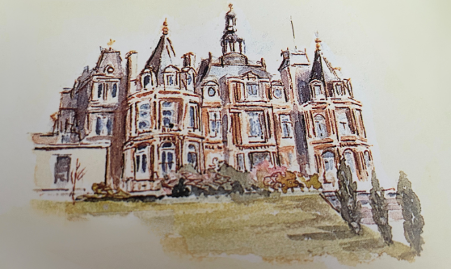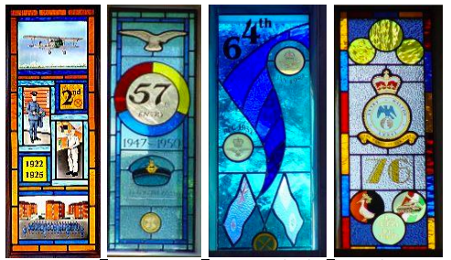Heritage & History

Halton is a Parish with a long, rich history, referenced in the Domesday Book of 1086. The Manor of Halton was bought from King Henry VIII in 1545 and sold to a farming family (the Fermoys) in 1560. The form of the Parish even today portrays its agricultural origins where livestock spent the summer months on the hillside in the Chilterns and were brought back to the foothills to overwinter. Halton remained an agricultural settlement throughout the ages and the rural setting is a still a dominant character of the Parish.
In 1720 the estate was sold to the Dashwood family and in 1795 they built the Dashwood Mansion, where Garden Close now sits. In 1797 the Wendover Arm of the Grand Union canal arrived and canal workers cottages were built alongside the agricultural labourers' cottages. The 1840 Tythe map includes the Church (originally 12th Century), The Old Post Office and The Bothies. In 1850 the Halton Estate was sold to Lionel Rothschild and in 1868 he held an Industrial Exhibition in the grounds of the Dashwood Manor, which was opened by Disraeli.
Lionel Rothschild left Halton Estate to his son Alfred in 1880. The Dashwood mansion was demolished and Halton House was built in the style of a French Chateau. Alfred extended the estate to include 9 farms and 57 cottages and built a school house for the children of the Parish, which is now the Village Hall. Alfred remodelled much of the village, and his motto ‘Concordia, Industria, Integritas’ (Harmony, Industry and Integrity), can be found carved in wood and stone in some of the buildings. The Rothschild influence can be seen at: Ivy Cottage, The Old Post Office, Lower Farm, The Kennels, Woodcutters Cottage, 8 and 9 Halton Village, Garden House, The Lodge, the Cricket Pavilion (now Halton UK Tennis Centre), Bridle Manor (the former stable block for Halton House) and the cottages on Halton Lane. Alfred also added two decorative bridges over the canal, Perch Bridge and The Blue Bridge. The original Halton brick-built canal bridge was demolished at the request of the MOD and was replaced by a simple road and pedestrian bridge, which makes this point of the Wendover Arm canal un-navigable by boat.
Within the Parish there are 4 listed buildings in the conservation area, in addition to St Michael and All Angels Church, the Blue Bridge and Halton House and its historic parkland. There are a further 8 buildings and a number of Barrack Blocks on the RAF Halton site which are listed.
In the south of Halton Parish there are two Archaeological Notification areas covering two Scheduled Ancient Monuments. These monuments are scheduled under the Ancient Monuments and Archaeological Areas Act 1979 as amended as it appears to the Secretary of State to be of national importance. They are the Neolithic Long Barrow at Haddington Hill and Iron Age Hill Fort at Boddington Camp. The Neolithic Long Barrow at Haddington Hill Boddington Hill Iron Age Hill Fort 33 75. Passing through Halton Parish are the Icknield Way (one of the oldest roads in the country) the Outer Aylesbury Ring and the Inner Aylesbury Ring. Passing along the southern edge of the Parish is the Ridgeway, a National Trail which is a nationally significant recreation resource. The Inner Aylesbury Ring follows the canal path through the village (left). The Outer Aylesbury Ring runs through Wendover Woods in the southeast of the Parish (right). 76. In 1919 Lionel Rothschild sold the estate to the MOD for military training. Barracks were built some of which are listed, and in recent years training trenches were discovered and restored, and are used to teach local schoolchildren about the First World War. A Halton railway branch line was also built (by German prisoners of war) so that trains could deliver coal to the heating boilers, although the railway line has long gone the platform still remains. ‘Oliver’s’ bridge was also erected across the Wendover Arm canal to mark the spot of the original railway bridge, which was blown up by the MOD as a training exercise. The original railway line can still be followed today, as it is currently a footpath to Wendover Station from Halton.
It was felt that the local history and heritage of Halton Parish should be better publicised. To that end the Parish Council commissioned three information boards which were erected at Halton Camp, Moor Park and adjacent to the canal bridge in the centre of the village.
RAF Halton has been linked to Halton Village for over 100 years and the Halton Parish’s heritage is intrinsically linked to the RAF’s military and sporting heritage. There are Commonwealth and RAF Graves in the Churchyard along with a War Memorial. RAF Halton was also a Home for Sport. The sports fields add greatly to the openness of the Parish and give it its sense of wide green spaces. This has resulted in a strong sporting heritage and ethos through the many events hosted there. The sports fields have been used historically by the military, and hired by local clubs and schools. It is important to the community that this integral part of our heritage is not lost when the RAF leaves. The Parish wishes to retain its sporting heritage see Section 106 Projects. 34 Girl’s Festival of Rugby is a major, national sporting event and has taken place on the RAF Playing Fields in Halton for many years
The Parish Council are working closely with the Halton Apprentice Association (HAA) to retain important aspects of RAF Halton’s military history. There is a strong desire amongst Parishioners to retain St George’s Church and its stained-glass windows as a military museum; linked to a Heritage Trail which would include the First World War Trenches and other historic areas of Halton Camp. Currently HAA delivers Science, Technology, Engineering and Mathematics (STEM) training to local school children at the James McCudden Flight Centre. It is important to retain STEM training in Buckinghamshire, and therefore the Flight Centre should be situated within the museum. See Parish Projects. Stained glass windows in St George’s Church representing the 2nd, 57th, 64th and 76th RAF Apprentice Entr
